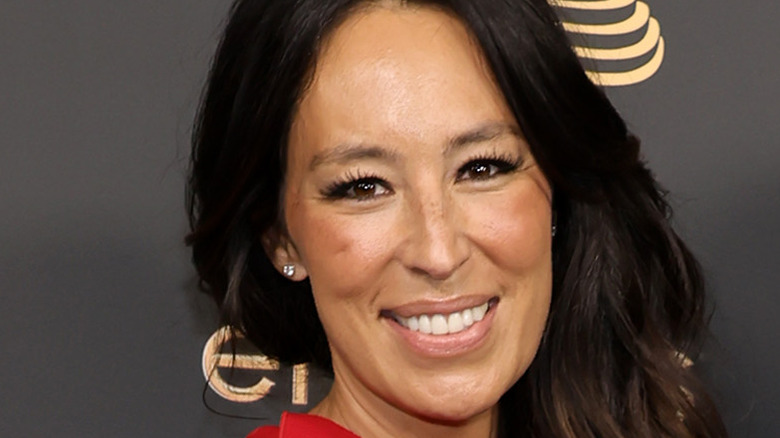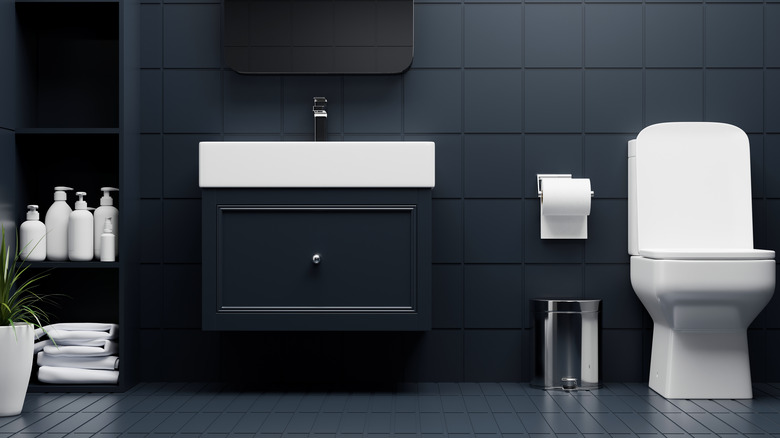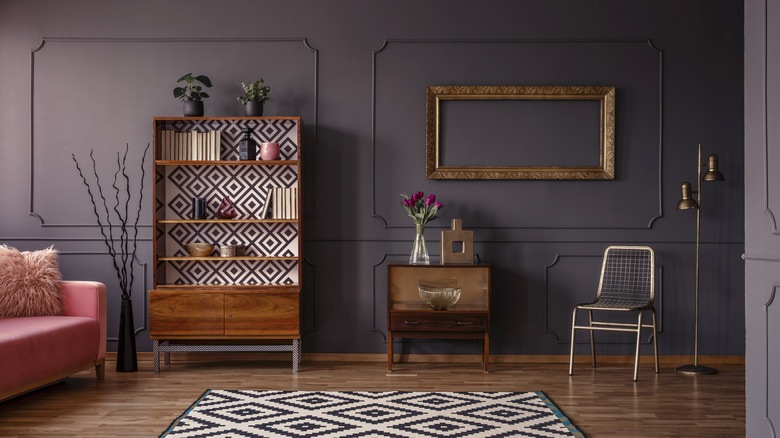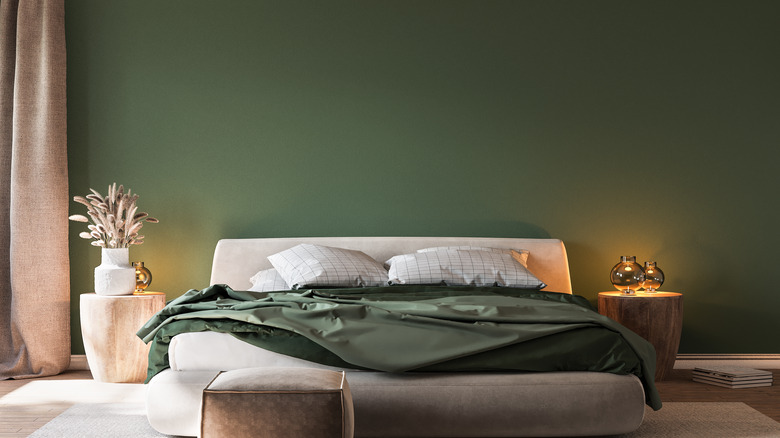Magnolia Star Joanna Gaines' Best Tips For Painting And Decorating With Darker Colors
For years, the light and bright aesthetic has reigned supreme for interior design style. And while that aesthetic isn't going anywhere, there is definitely a rise in darker, moodier palettes. Dark shades have a sophistication that draws people to them. They also make a bold design choice and provide tons of contrast, which is ideal when trying to try something bold with your design.
When first starring on HGTV's "Fixer Upper," Joanna Gaines was known for her light and bright interiors that employed neutrals like whites, creams, and grays. Warm whites are comforting, and gray can be a color that helps give a room depth, Gaines explains on her site, Magnolia. But in recent designs, like the one featured on Magnolia's "Fixer Upper: The Castle," Gaines has recently moved to using darker colors in the space.
"A lot of the time, I'm like, 'Did I go too dark?'" Joanna Gaines asks herself, according to Better Homes & Gardens. "But I just feel like I'm at a stage in life where I'm willing to take these risks, and it's more fun that way." Joanna Gaines shares her tips for adding darker colors to your home.
Small goes a long way
Painting a room a dark color can feel like a big commitment, especially if you're trying it for the first time. Luckily, you don't have to jump to painting an entire room black or navy blue to participate in the moody paint trend.
"If you want to experiment but you're too scared to do it in a larger space just because of the investment — and also if you hate the color, it's just harder to switch when it's a whole room — start in smaller spaces," Joanna Gaines tells Better Homes & Gardens. Starting in a small room or a small portion of a room can be a gentle entrance into the darker sphere. Powder rooms and half-bathers are great spaces to start with. You may even opt to paint a ceiling or half a wall with wainscoting.
If you want to go bigger, Gaines says, "it's always fun to go a bit bolder in more specific rooms like the dining room, the study, or mudroom" (via Real Simple).
However, many people may worry about filling even a small space with a dark color because they've been told that lighter colors make a small room appear larger. However, dark colors can achieve the same goal, according to Design Sponge, because they can blur a room's edges with the depth of color and shadows.
Don't stress about matching
You may be nervous about choosing a dark paint color because of how it will blend with others in your home's color palette. But Joanna Gaines gives permission for moody colors to shine on their own. "For me right now, what I'm loving about home and even when we're designing these spaces, is letting each room tell its own unique story," Gaines says, per Better Homes & Gardens. "When you do that, and you do it with that intention, somehow it still ties in."
A home doesn't have to use the same colors all through the design, but intentional decor decisions can be the unifying feature. When choosing darker colors, desaturated versions can feel more sophisticated, and nature-inspired can help guide you in selecting a color, according to The Seattle Times. And to add a touch of glamor, choose a high-gloss finish for your moodier shades.
Joanna Gaines herself has admitted to not planning out every move in the design. "I used to care so much about making sure that this ties here, and I think that's important," Gaines explains. ". . . I do feel like that as long as you're the storyteller and you're doing it in your own unique way, somehow that magically works."
Balance details with colors
Not everything has to be dark if you choose to paint the walls a moody shade. In fact, to create balance and contrast, choosing different colors can create a more interesting space. "What I love is taking these traditional colors and toning the feeling down a little bit with what I accent it with, whether it be my rug, my pillows, my throw, even the art on the wall," Joanna Gaines explains to Better Homes & Gardens.
Bringing in a lot of natural light or candles can enhance the moodier feeling of the space, according to Decor8. Contrasting patterns can also highlight the overall moodier color. "This is your office, this is your living area, this could be your kitchen or your formal dining room, but then again allowing that lightness to come in with your light fixtures, with your florals, with your accents, it's all about balance. That's what design is: It's all about balance. To me color is always that first step into what story you're wanting to tell, and from there you build off of it."



